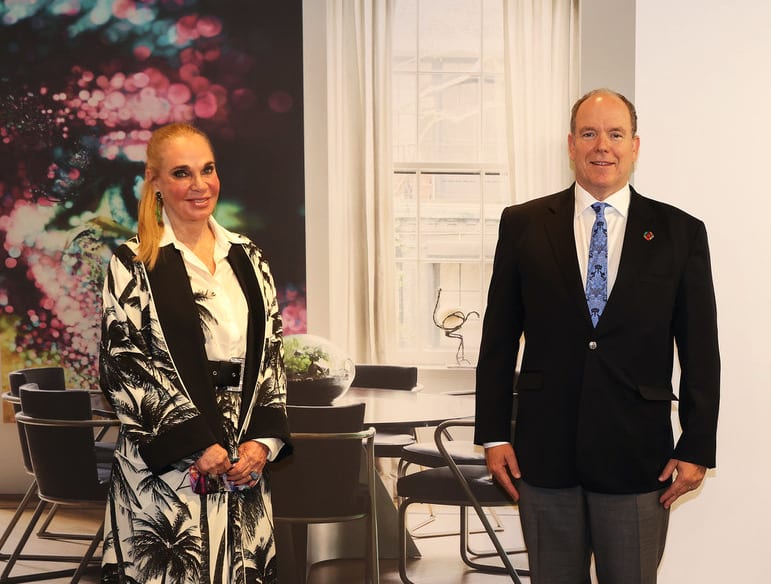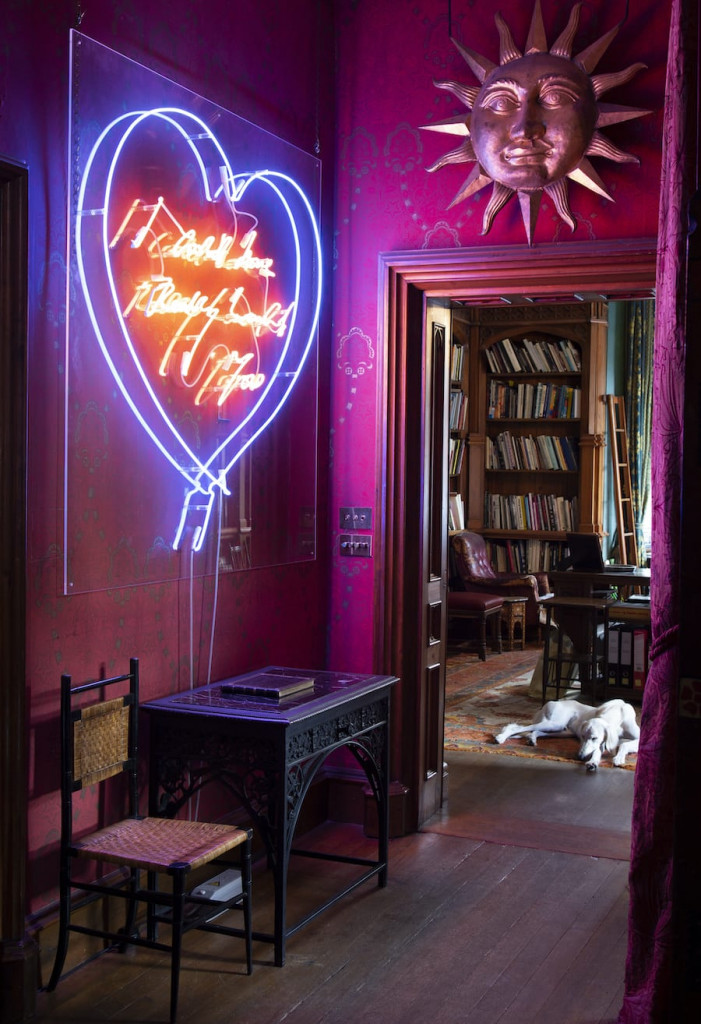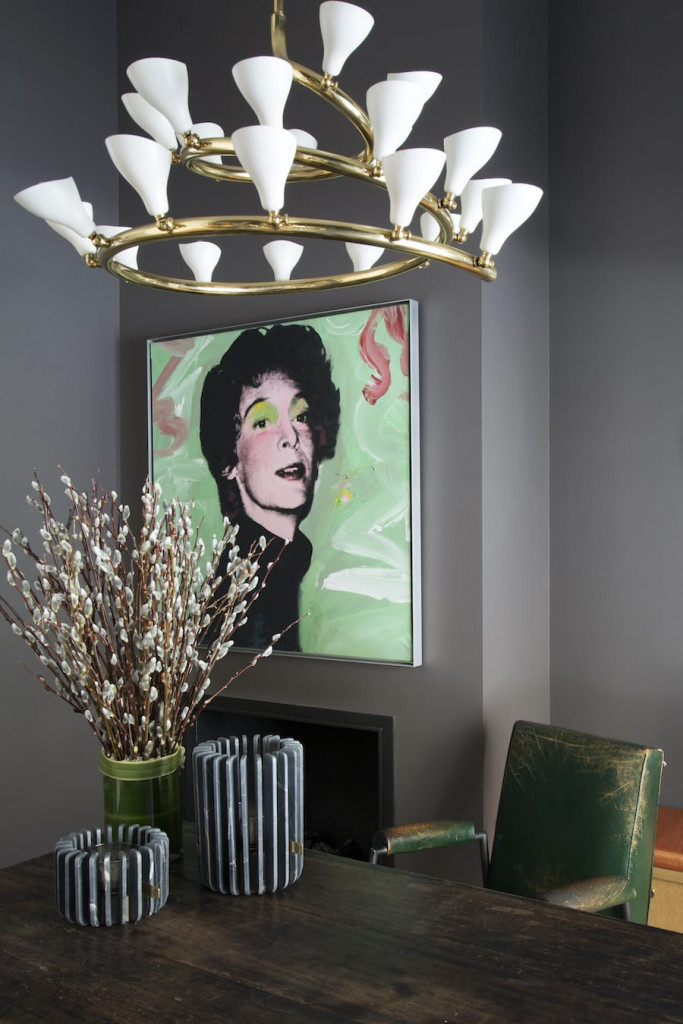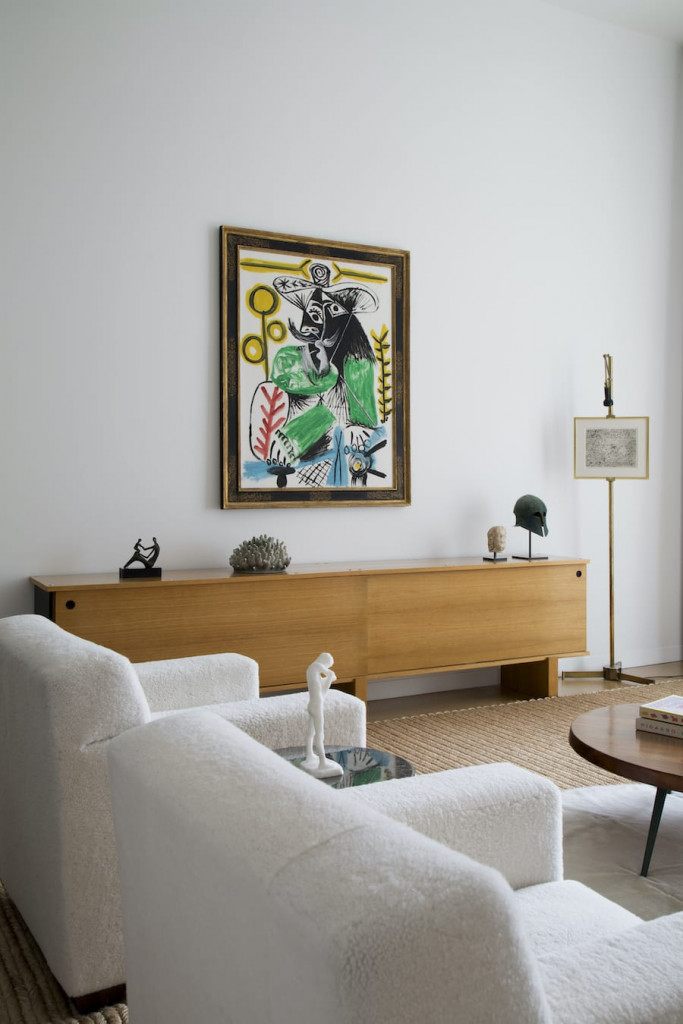Never before has the public been given such an exclusive view into the lives of art collectors and gallerists. For Art’s Sake by Tiqui Atencio Demirdjian is as much a window into the minds of these great collectors, as it is a door into their elaborate homes.
From “rock ‘n’ roll art dealer” Ivor Braka who has “spent a lifetime breaking the established rules” from his gothic home in London’s Knightsbridge, to Monaco’s own pre-eminent art dealer Adriano Ribolzi and his self-designed penthouse filled with historical treasures, this book is for lovers of art, architecture and interesting stories.
Monaco Life sat down with Author and Collector Tiqui Atencio Demirdjian during the book’s launch at the Grimaldi Forum Monaco in late October to talk about the makings of For Art’s Sake – a celebration of living with art.
Monaco Life: You were 17 years old when you got your first artwork. What was it about that piece that captured you?
Tiqui Atencio Demirdjian: It was a gift that my father gave me, a piece by Bernard Buffet. I was very attracted to it so I started learning about the artist. After that, my uncle taught me everything; he taught me the ropes. He was like my father – I grew up with him and his wife in Venezuela – and he was a very well-known contemporary Latin American and historical art collector. His second home was Christies, Sotheby’s and the museums. When our families would gather together on Sundays, we would always go to galleries.
So, I started buying, but I started buying without any information whatsoever, only what I liked. And every time I brought something, I would find out more about the artist. That’s how my uncle did it, he would only buy something if he was really into the artist.
Gradually, it became a collection without me knowing it. I didn’t even consider myself a collector. People would ask to see my collection, and I would say “What? You mean the art hanging on my walls?” (laughing). I still find it difficult to accept the word but I guess I am because I buy all the time.
What is your favourite period?
I don’t have a favourite period, but I do love geometric abstraction. I am very eclectic in my taste, perhaps a product of all my moving around. I was born in Venezuela but I have lived in New York, Rome – where I studied art – Paris, London, and now Monaco. I have always been a bit of a gypsy.
I am interested in how you put the book together. Art is a very personal thing, so how did you get into the collector’s homes and how long did it take to put the book together?
This book took about three and a half years, while my first book Could Have, Would Have, Should Have took four years because it was a lot more writing. It was easier the second time around, but both books started from curiosity and wanting to understand what made the collectors like my uncle tick, what motivated them. I wanted to ask them questions and I wanted to know more about the process. I wanted to know about their adventures, emotions, commitments…
I also always wanted to write a book. When I was studying in Rome, I wrote poems. That didn’t stick but I knew I wanted to write, and it has always followed me. Then I decided that this is what I know about and this is what I should write about.
I have always liked anecdotes and listening to people talk and tell me their stories; it has always fascinated me – the interjectory and the journeys that these people were living. The other thing I noticed was that every collector was different from the other. They had completely different approaches to collecting. But for all of them, it was just a natural process, the celebration of living with art.
The images are captured perfectly by Jean-François Jaussaud, a renowned photographer, art director and producer. How did your collaboration come about?
Very serendipitously, I met Jean-François Jaussaud and he was talking to me about the books he was planning to do. We started discussing my idea and he wanted to do it right away. He said he had the passion to do it.
And he was fantastic. He works alone, which is really important because asking these people to open their homes and then telling them they are going to be invaded by five photographers over the space of six hours… they would freak out. But when they heard it was only going to be one person, they were much more comfortable.
And why the title For Art’s Sake?
It is my youngest son who said I should call it For Art’s Sake, and I really fought for the name. I realised that collectors sacrifice so much of their lives, their time, in dealing with artists – nurturing them and making sure they are happy, putting them in the right collections and museums. They do a lot “for art’s sake”.
There is also the philanthropy – they are very generous towards museums and help their own artists to promote them and get them to where they think they should go. When a collector believes in an artist, they take them under their wing and that’s it. Sometimes the artist gets poached by someone else, and I can imagine how many sleepless nights they have just thinking of that.
But I learned that philanthropy was the common thread amongst collectors in my first and second books. I think that art is a way of communicating and doing good for the world. It brings us together, it builds bridges – which we need very much today – and that’s what I really got out of doing this book.
When you arrived in the Principality four years ago, Monaco was just starting to position itself in the global art scene, with major new art fairs like ArtMonteCarlo. What was your perspective of Monaco then compared to now?
I think there was a time when little was being done about art and then all of a sudden they realised that this is a captive audience; that people here have the means to appreciate art; that it is a small community and a small city but it has everything. And it was a correct move, Monaco was ripe for the taking. People here love to live with beautiful things.
Which artists have entered your collection recently?
A Brazilian artist called Erika Verzutti, who was exhibiting at the Pompidou in Paris. I have a penchant for Latin American art and I thought she was a very interesting artist, very intellectual. She is a conceptual artist and I love her concept, so I brought a wonderful piece of her art in Paris.
And Sean Scully – an Irish born American artist.
What art trends do you see happening over the next 10 years?
Technology will be very important. Through history, we know how art has evolved. We cannot avoid the technology behind the newer generations, the millennials – we need to watch what they are doing.
So, I believe the evolution of art is a natural evolution into technology. But the process of painting, sculpture, creating with your hands… that will never stop. We just have to add the factor that we are living in a technological era.
What are your thoughts on digital art?
It is very interesting. It could be too much of a gadget for me, but in the right hands, with the right artist… never say never.
It is a mistake to not recognise art, because it might pass you by. I don’t like to say “no”, because I might regret it in 20 years’ time.

Photos © For Art’s Sake: Inside the Homes of Art Dealers by Tiqui Atencio Demirdjian, Rizzoli New York, 2020. Photographs © Jean-François Jaussaud
Related stories:
New book gives unprecedented view into art dealers’ homes



